memory
Latest
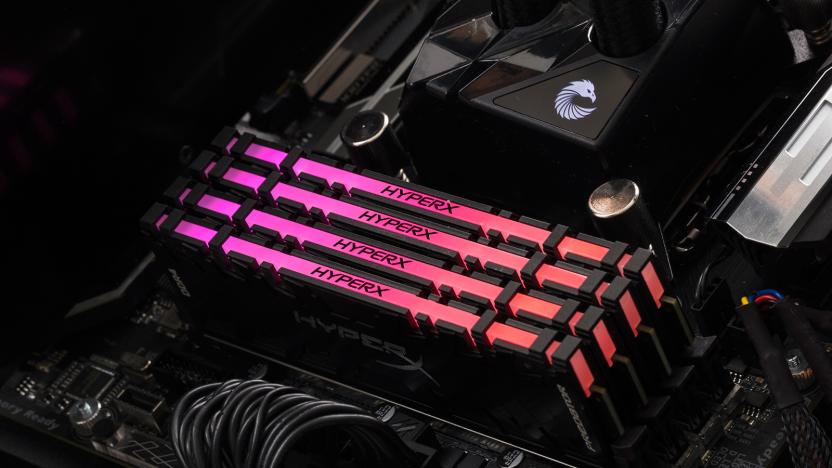
HyperX memory improves your PC's light show with infrared
Many PC enthusiasts use light-up RAM to add a flair to their systems. But creating a proper, synchronized light show isn't always easy. Even if you have the right motherboard, compatible RAM and the necessary software, there's no guarantee of a harmonious display. HyperX wants to fix that: it's introducing new Predator DDR4 modules that can use infrared light to sync their RGB illumination. There's no guesswork and no external cables -- you can just assume your lights will pulse together using power directly from the motherboard.

Toshiba's chip drama ends with sale to a financial group
The long-running bidding war over Toshiba's flash memory business has effectively come to an end... and the winner probably isn't who you expected. Toshiba has agreed to sell its NAND division to a group led by the private equity firm Bain Capital for the equivalent of $18 billion. This isn't going to please Western Digital, Toshiba's partner in the US, but Toshiba expects the deal to survive any legal battles. The question is why -- and whether or not Toshiba's eagerness to sell might cost you in the long run.
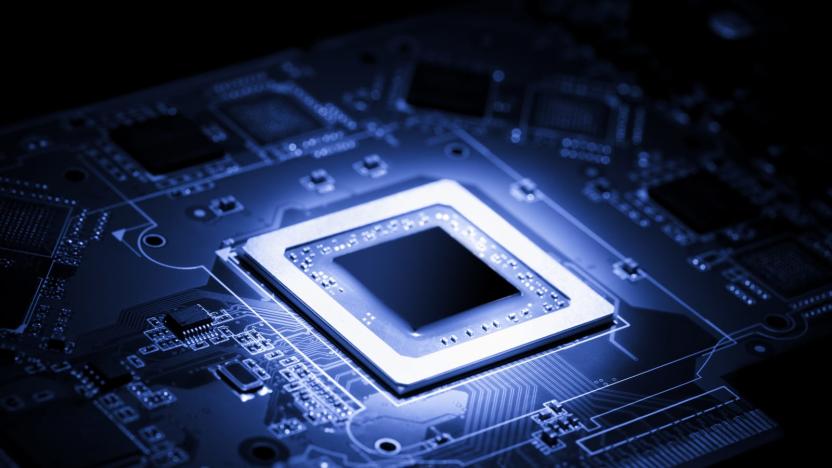
Ever-changing memory could lead to faster processors
Virtually every central processor in your devices uses a tiered set of memory caches to speed things up by fetching commonly used data. But it's not very efficient -- in trying to accommodate everything, it's rarely the fastest at anything. MIT's CSAIL researchers want to fix that. They've developed a cache system (appropriately named Jenga) that creates new cache structures on the spot to optimize for a specific app. As Jenga knows the physical locations of each memory bank, it can calculate how to store data to reduce the travel time (and thus lag) as much as possible, even if that means changing the hierarchy. Whether an app would benefit from multiple cache levels or one gigantic cache, this system would be ready.
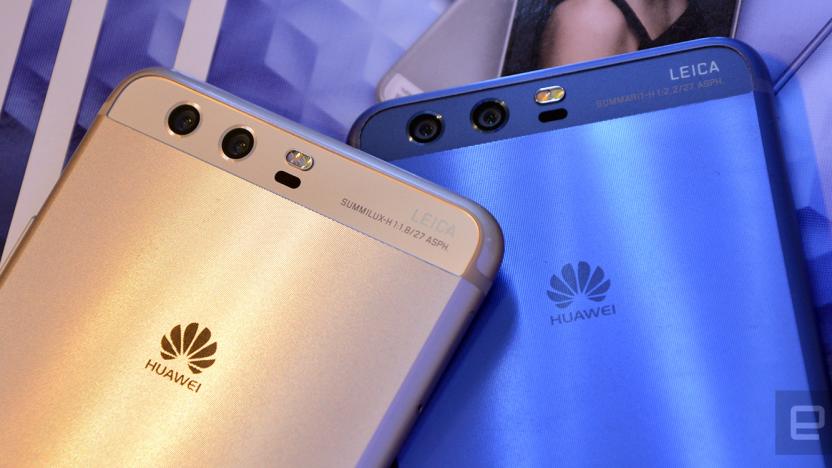
Huawei blames slower P10s on memory shortage
Memory speed isn't always something that one would pay attention to when buying a smartphone, or at least you'd expect the latest flagships to come with the fastest options available at the time, but it turns out that this isn't necessarily true. Recently, some Huawei P10 and P10 Plus users in China noticed that they were only getting eMMC 5.1 memory speeds on their devices. For instance, the sequential read speeds were in the ballpark of 250MB/s on AndroBench, whereas the luckier folks who got UFS 2.0 or 2.1 chips on their phones managed to hit around 550MB/s or even 750MB/s (our very own international unit got 786.67MB/s). Indeed, Huawei never specified the type of flash memory on its P10 spec sheets, which led to speculations that the mobile giant was intentionally misleading consumers.

Firefox 'performance' tab will curb its RAM hunger
Despite their popularity, both Firefox and Chrome have reputations as resource hogs that chew up big chunks of your RAM. In the case of Firefox, some of this is unfair -- parent Mozilla says part of the problem is that many users are running older machines without a lot of memory in the first place. To help those folks, the developers are working on a new feature called "performance" that will let you fine-tune the browser if you're running a PC that's less than state-of-the-art.

Mice brains store backup copies of memories
Turns out that even the human brain might use redundancy when it comes to storage. New research out of the Riken-MIT Center for Neural Circuit Genetics suggests that memories are stored in two places in the brain: the hippocampus for short-term and the cortex for longterm. Previously, the prevailing theory was that once a memory was formed in the hippocampus, it would then move to the cortex for storage. But that may not be the case, according to a paper published in Science.

Intel's extra-fast 3D storage comes to your desktop PC
It didn't take long for Intel's 3D Optane storage to reach a product you can realistically buy. The chip maker has introduced Optane modules designed to boost the performance of your desktop PC. They're strictly cache drives that only hold 16GB or 32GB (the server module packs 375GB), but don't let that dismay you. In theory, the combination of extremely low latency (under 10 microseconds) with solid state drive speeds (at least 900MB/s in peak sequential reads) should dramatically reduce loading times across the board.
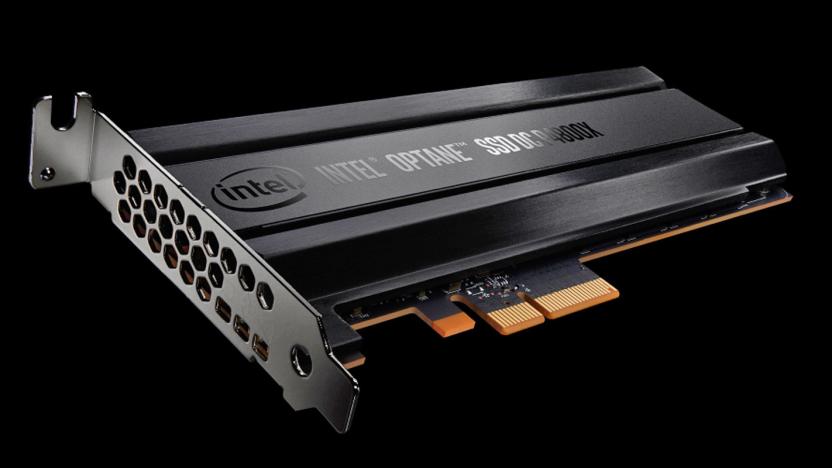
Intel's first hyper-fast 3D drive is meant for servers
At last, Intel is making a stand-alone drive based on its extremely fast 3D storage technology... although you're probably not about to pick one up yourself. The chip maker has unveiled the Optane SSD DC P4800X, a drive destined for the PCI Express or NVMe slots in servers. It only has 375GB of space, but its extremely low latency (typically under 10µs) and 2GB/s throughput means that it can serve as either a memory cache or storage. If you're involved in high-performance computing, online shopping or other categories obsessed with gobs of RAM and rapid turnaround times, this is theoretically your dream device.

DeepMind AI learns to 'remember' previous knowledge
For all the talk of artificial intelligence becoming increasingly brain-like, there's one area where it frequently falls short: memory. Neural networks usually have to learn everything they need to know about their duties, rather than building on top of existing experiences like real brains do. Alphabet's DeepMind team hopes to fix that. They've crafted an algorithm that lets a neural network 'remember' past knowledge and learn more effectively. The approach is similar to how your own mind works, and might even provide insights into the functioning of human minds.
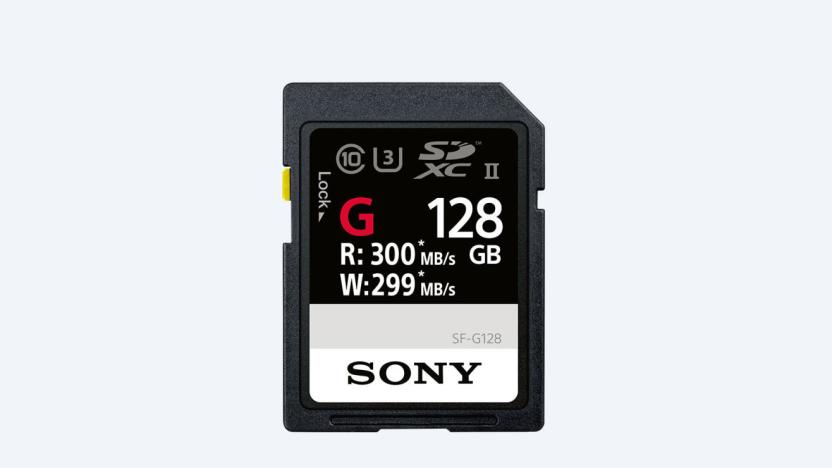
Sony's 'world's fastest' SD card writes data at 299 MB/s
Sony's upcoming SF-G series of SD cards will be available this spring, the company announced today. When that time comes, Sony said they "will be the world's fastest SD cards." Boasting a maximum write speed of 299 MB/s, that claim is right on point.
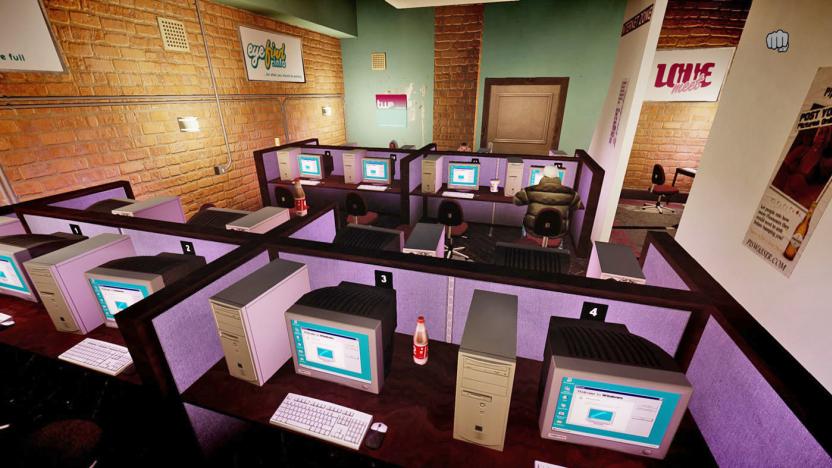
Most Firefox users are running Windows 7 on dated PCs
Mozilla is helping developers figure out if their game or app will run well for average and not just hardcore users. The Firefox Hardware Report, using data from its anonymized Telemetry app, shows what OS and hardware folks are using, along with popular screen resolutions and other information. "Existing hardware reports (such as those from Valve and Unity) are excellent, but represent a different group of hardware users than the majority of people who use the web," the organization says.

Brains can recover some 'lost' memories
For the longest while, researchers believed that you could only preserve a memory in your brain if the relevant neurons were active. However, it now looks like this isn't always the case -- and that could be a tremendous help to anyone suffering from short-term memory loss. Scientists have discovered that small jolts of electricity to the brain (specifically, a pulse of transcranial magnetic stimulation) can revive recent memories. Your mind can slow near-term memories down to a dormant state where they're in the background, but remain ready to come back when necessary.

HP successfully tests its vision of memory-focused computing
HP's grand dream for the future of computing, The Machine, is no longer just a set of clever ideas and hardware research. Hewlett Packard Enterprise (the business-focused company that emerged from HP's split) has successfully tested its Memory-Driven Computing architecture, where memory is more important to completing tasks than raw processing power. It's just a proof-of-concept prototype, but it shows that everything works: compute nodes that share a pool of fast but permanent memory, speedy photonics-based data links and the custom software needed to make it all run.
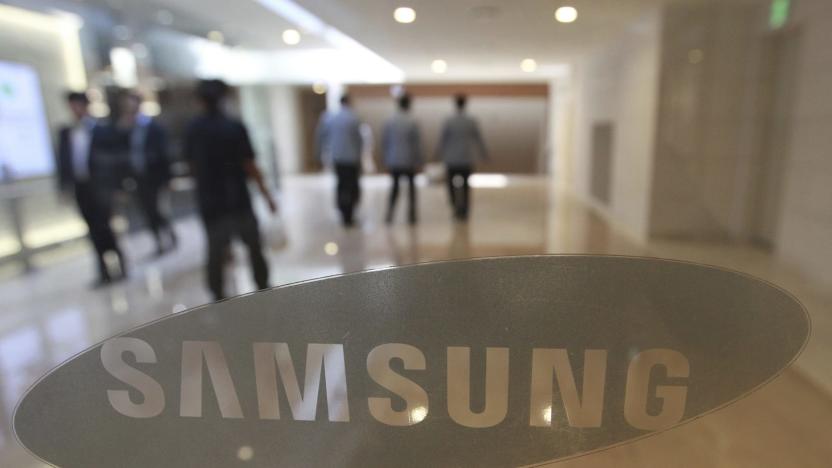
Samsung's vision of the mobile future is 4K-and-VR ready RAM
While Samsung's customers (and stock price) are still reeling from the Galaxy Note 7 immolation debacle, the tech giant is focusing on the future. As such, the company has introduced a new type of memory that should "greatly improve mobile user experiences, especially for those using Ultra HD, large-screen devices," according to a statement. Specifically, it's 8GB LPDDR4 (low power, double data rate 4) that takes advantage of 16Gb LPDDR4 chips working in concert with 10-nanometer class process technology. Now, note that's not 10nm proper, but somewhere between 10-and-20 nanometers. It seems 1-nm is too far in the future for now.

Terahertz radiation could speed up computer memory by 1000 times
One area limiting speed in personal computing speed is memory -- specifically, how quickly individual memory cells can be switched, which is currently done using an external magnetic field. European and Russian scientists have proposed a new method using much more rapid terahertz radiation, aka "T-rays," the same things used in airport body scanners. According to their research, published in the journal Nature, swapping out magnetic fields for T-rays could crank up the rate of the cell-resetting process by a factor of 1000, which could be used to create ultrafast memory.

Brain-like memory gets an AI test drive
Humanity just took one step closer to computers that mimic the brain. University of Southampton researchers have demonstrated that memristors, or resistors that remember their previous resistance, can power a neural network. The team's array of metal-oxide memristors served as artificial synapses to learn (and re-learn) from "noisy" input without intervention, much like you would. And since the memristors will remember previous states when turned off, they should use much less power than conventional circuitry -- ideal for Internet of Things devices that can't afford to pack big batteries.

The iPhone 7 Plus packs 3GB of RAM for extreme multitasking
Besides that extra camera lens, the iPhone 7 Plus is packing additional hardware. Specifically, an extra gigabyte of RAM according to 9to5Mac. That brings the total amount up to 3GB if you're keeping track at home. More than that, this is the iPhone with the most RAM yet which should make multitasking with a bunch of resource intensive apps a much smoother experience. It's just 1GB shy of what's available in the 12.9-inch iPad Pro. Now all you have to do is wait until midnight tonight to decide if that extra memory is worth the up-charge.
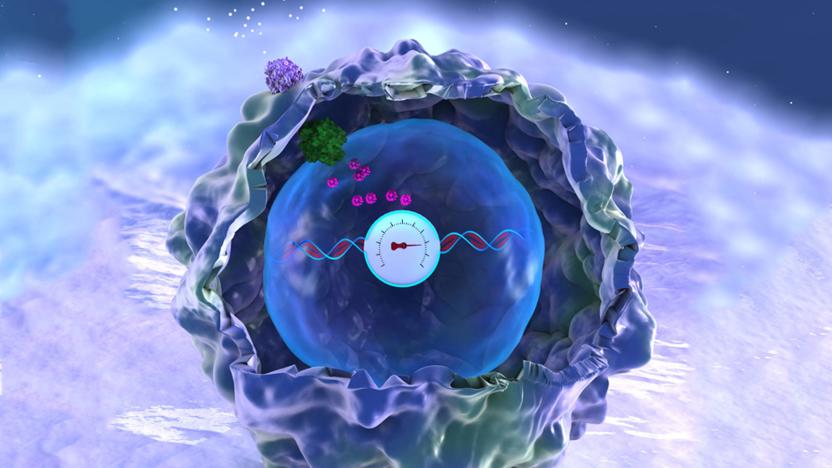
Gene editing records 'memories' in human DNA
Scientists have been recording data in DNA for a while, but it has usually involved bacteria and other simple organisms. MIT, however, just took a big leap forward. Its researchers have used the CRISPR gene editing technique to record histories in human cell DNA for the first time. They've crafted a gene circuit that only expresses an enzyme when it's near a key immune cell molecule, building up mutations the more it's exposed to that molecule. All you have to do to extract "memories" is to sequence those genes. They'll tell you whether or not there was a lot of inflammation, for instance.

Samsung's world-first UFS memory cards are blazing fast
We've heard arguments for and against removable storage on smartphones, but we can all agree on the fact that the more the merrier. And we're not just talking about memory space here, as the speed becomes more crucial when it comes to capturing higher video resolutions on our smartphones and drones. To satisfy our need for speed, Samsung is the first to announce a series of UFS (Universal Flash Storage) removable memory cards, with its 256GB flavor boasting an SSD-like sequential read speed of 530MB/s -- that's about half a gigabyte per second and almost five times faster than the top microSD cards these days. It can also do 170MB/s sequential writing, which is almost two to three times faster.

IBM's optical storage is 50 times faster than flash
Flash storage is too slow for your device's main memory, but RAM is expensive and volatile. Thanks to a breakthrough from IBM, phase-change memory (PCM) might one day replace them both. The crystal-based storage has been used in optical disks and other tech for at least 15 years, but the technology has been limited by the cost and storage density -- cells are either "on" or "off." However, IBM researchers have figured out how to save 3-bits of data per cell, dramatically increasing the capacity of the original tech.





